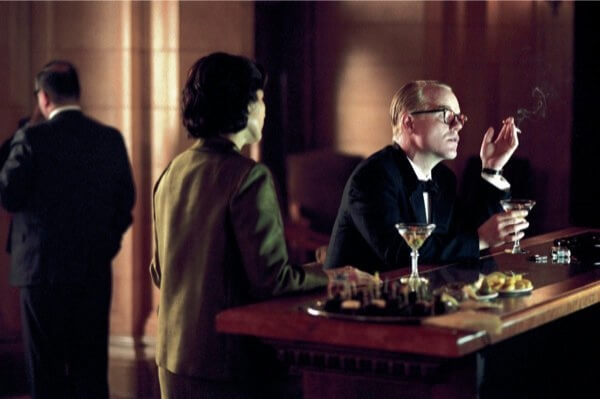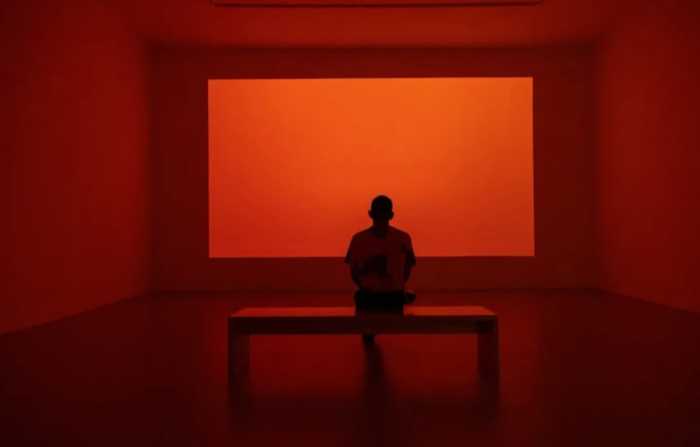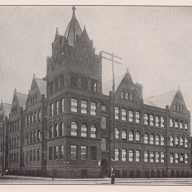By Steve Barnes
It’s a busy fall season at the Museum of the Moving Image in Astoria, featuring a tribute to one of the greatest American actors of his generation, a retrospective of the work of a director who ruled the art houses in the 1990s and a web-based, interactive exhibition that gives viewers a look at how American presidential candidates have been marketed to the public for the past 60 years.
Running through Oct. 2 is “The Master: Philip Seymour Hoffman,” which is dedicated to the performances of the unique film and theater actor who died at the age of 46 in 2014. “Philip Seymour Hoffman had an uncanny ability to disappear into a role,” said MOMI’s chief curator David Schwartz, “yet at the same time to invest his performances with such complexity, depth and empathy that they always felt deeply personal.”
Those qualities can be seen in all of the 16 films that the museum has chosen for this series. Working with a who’s who of recent directors (Sidney Lumet, Mike Nichols, Spike Lee, Charlie Kaufman and Paul Thomas Anderson, to name a few), Hoffman created a gallery of characters that covered a very broad range while always bearing his own individual signature.
Three of his strongest performances are in films that will be screening this weekend. In “Capote,” which screens Friday at 7 p.m., the burly actor seems to almost magically shrink himself down into the body and persona of the diminutive writer. Sidney Lumet’s “Before the Devil Knows You’re Dead” (Saturday, Oct. 1 at 2:30 p.m._ lets him walk an edgy, emotional tightrope as one of a pair of brothers who attempts to rob a store run by their own parents, with disastrous results. And in Charlie Kaufman’s “Synecdoche, New York” (Sunday, Sept. 25 at 4 p.m.) he brings to life an unhinged playwright who constructs a massive set of New York for a theatre production. Kaufman will appear in person at the screening of the film.
Once that series wraps up, the museum will be presenting what is being billed as the most comprehensive U.S. retrospective ever of the films of Polish director Krzysztof Kieslowski from Oct. 7 – Nov. 6. Kieslowski was highly regarded in both the United States and Europe in the early 1990s for his distinctive combination of philosophical content and a rigorous sense of artistic style. The winner of a Jury prize at the Cannes Film Festival, the Best Director prize at the Berlin Film Festival, a French César and an Academy Award nomination for Best Director, his reputation has only risen since his death at the age of 54 in 1996.
This series contains his most well-known works, “The Double Life of Veronique,” “The Decalogue,” a television series based on the Ten Commandments, and what is known as the “Trois Couleurs” trilogy, three films named “Red,” “White” and “Blue,” in reference to the colors of the French flag. The story of each film is loosely based on one of the three political ideals in the motto of the French Republic: liberty, equality and fraternity.
In addition, earlier features, documentaries, and several films written or conceived of by Kieslowiski but directed by others after his death will be shown.
One of the highlights of both of these series is the chance to see these works projected in 35mm on the big screen. All of the films in the Hoffman series as well as the “Trois Couleurs” trilogy will be projected in the 35mm format.
To see another exhibition currently being sponsored by MOMI, you don’t need to go to the museum at all. “The Living Room Candidate,” at livin
An educational tool as well as an exhibition, the site offers lesson plans for teachers and an extensive list of online resources linking users to websites for earlier campaigns, as well as varied research material from such sources as CNN, the New York Times, and Stanford and George Washington universities.
But it is the TV ads that are the real draw here. Seeing how the images and ideas of the presidential candidates were presented over a wide span of years shows us how many things have changed. The bouncy, optimistic animation of “Ike for President” in 1952 seems light years away from the 2016 campaign. And the sultry lounge singer who croons “I love the gov/The governor of Illinois” about Adlai Stevenson in the same campaign would be unimaginable in today’s world.
But as the years progress, we see the political world we live in now beginning to take shape. A famous ad for the campaign LBJ ran against Barry Goldwater in 1964 shows a little girl picking the petals off of a daisy, with the final petal intercut with an image of a nuclear explosion. The strength of the ad—its ability to reduce an entire political argument into a clear-cut image—also serves as a sign of how the medium of television can simplify, perhaps even over-simplify, a message.
Site users can perform some of that manipulation themselves. Using something called the “Admaker,” they can re-edit ads to change their emphasis or construct new ads from historical footage.
That kind of interactive focus has long been a part of the museum’s program—from displays that let users re-score film clips, to the many opportunities it offers kids to create their own work, inspired by the films and other related art they can see. That focus furthers its goals of promoting the understanding and enjoyment of moving images in all their forms—whether pristine prints of classic films or the ads we see on television every day.
The Museum of the Moving Image is at 36-01 35th Ave. in Astoria. It is open Wednesday and Thursday from 10:30 a.m. to 5 p.m, Friday from 10:30 a.m. to 8 p.m., and Saturday from 11:30 a.m. to 7 p.m.
For more information about any of its programs, go to movin





































